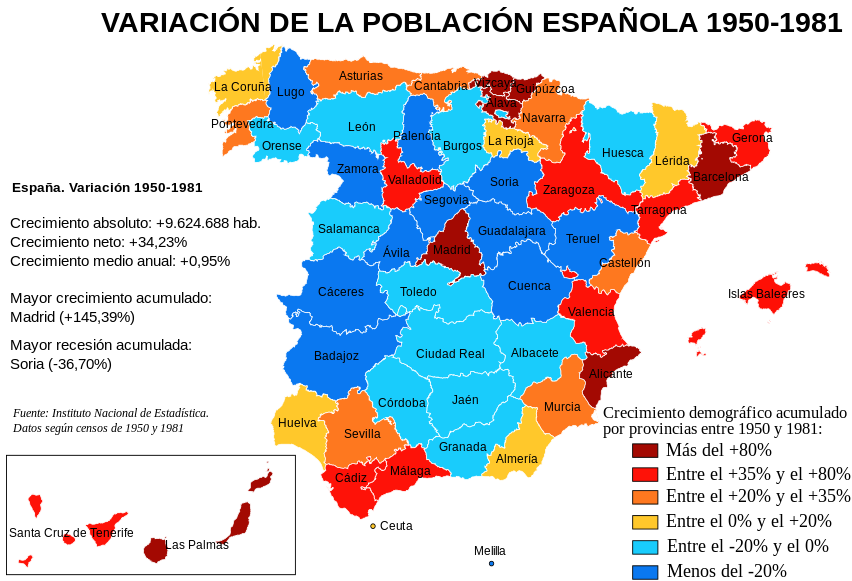Society

Between 1939 and 1975 Spanish population grew a lot: from 26 million up to 35.5 million inhabitants. Nonetheless, during the Post-War years there was a severe decrease of the birthrate. There were many migration movements in Spain and outside Spain.
There was a massive internal migration movement in the 1950s and 1960s: the rural exodus More than 4 million people left their homes and moved to the most industrial or touristy areas. Some cities grew so quickly that did not have enough housing and services. Hence, some slums were created on the outskirts of these cities.
External migration took many Spaniards to other European countries in the 1960s and early 1970s. They mostly emigrated to West Germany, France, Belgium, and Switzerland, where they did the hardest jobs.
A new social structure developed after the 1950s once there was economic development:
- The upper class was now held by the bankers and businessmen, not by the landowners.
- A new middle class grew in this period and most of the Spaniards belonged to this group. Most of them worked in the tertiary sector.
- Working class was composed of farmers (who were fewer than before) and industrial workers, who improved their conditions and had access to buy their own properties.
Compared with 1939s society, spanish society had chaged completely in 1975